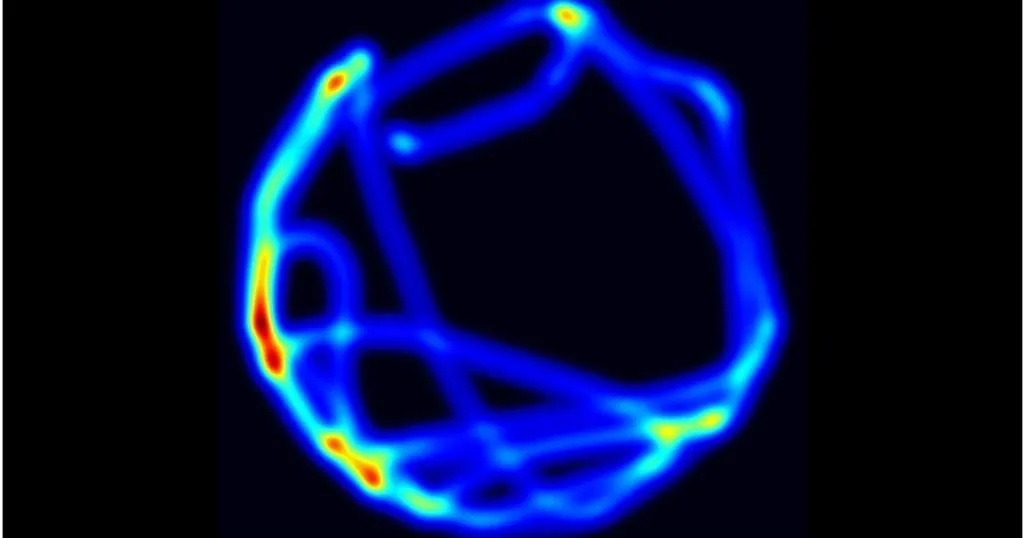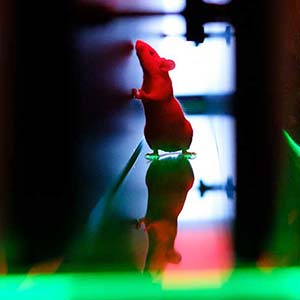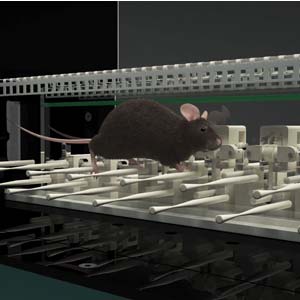Parkinson's disease research - Relevant measures in pre-clinical studies
Parkinson’s disease: the neurodegenerative disorder that affects mobility in a life-changing way. Learn more about relevant measures in pre-clinical studies.
Posted by
Published on
Tue 05 Mar. 2019
Topics
| CatWalk XT | ErasmusLadder | Locomotion | Neuroscience | Parkinson's Disease |

Parkinson’s disease: the neurodegenerative disorder that affects mobility in a life-changing way. Slow movement, shuffling of the feet, and difficulties initiating movement are all impairments we recognize as typical for this disease.
Researchers aim to find new therapeutics, and an important aspect for the translational value of these studies is measuring relevant behaviors in animal models. Another focus of Parkinson’s research is the side-effects of current drugs such as levodopa.
Parkinson’s symptoms in animal models
Though gait impairment is one of the most prominent symptoms of Parkinson’s disease (PD), it is not always that well investigated. Researchers (1) at the Southern Medical University (China) argued that you need to be able to examine symptoms in detail before learning how to treat them. So, they created different rat models for PD and compared their locomotion to clinical symptoms in human patients. For this, they used the CatWalk XT system.
This resulted in a rat PD model with clinically relevant behaviors. Where Parkinson’s patients take small slow steps, these rats showed in increase in stance, step cycle, and duty cycle. The increase of the terminal dual stance in limbs in the rats could be translated to the delays or freezing of gait, or gait hesitation as seen in patients. Read more about this study here.
Assessing relevant behaviors for Parkinson’s disease studies
A more recent study posed a similar question: why do most commonly used behavioral tests in animal research on PD not actually assess behaviors that resemble these symptoms?
At the University of Auckland in New Zealand, researchers (2) used two rat 6-OHDA lesion models of PD to investigate a number of gait parameters with CatWalk XT in hopes of finding a resemblance to human PD symptoms, and more specifically finding them early on. They found gait analysis to be a reliable method for the detection of motor deficiencies relevant to PD. Particularly, it allowed for early detection, some as early as one week after the lesion was applied. Read about it in this blog post.
Ataxia and cerebellar functioning in Parkinson’s studies
After discussing two studies that looked at gait impairments, let’s look at ataxia. A specific form of gait impairment, ataxia is the incoordination of movement that can be the consequence of compromised cerebellar functioning. The cerebellum, or our “little brain,” is therefore an important focus in many Parkinson’s studies.
Researchers (3, 4) at the Erasmus MC (The Netherlands) studied the role of several cerebellar cell types in motor learning, locomotor adaptation, motivation, and avoidance behavior using several knock-out mouse strains. They used the ErasmusLadder to run these tests, and it proved to be a sensitive way to test for cerebellar functioning. Read about these studies here.
Studies on the effect of typical L-DOPA treatment
A large part of Parkinson’s studies focus on the long-term effects of L-DOPA, or levopoda, a common clinical treatment for PD with which many patients struggle.
In one example, researchers (5) studied the influence of L-DOPA on the binding of dopamine to its receptor in relation to motor and exploratory behavior in rats, using an open field set-up PhenoTyper) and EthoVision XT video tracking software. More drugs led to a higher dopamine release, and in turn to less activity.
In a second example, researcher (6) investigated the link between the long-term side effects of L-DOPA treatment: dyskinesia and motor fluctuations. Rats were subjected to an open field test, during which their activity was video tracked with EthoVision XT. Specific measures included distance moved, velocity, and full rotation frequencies. While there was no correlation found, the researchers observed an interesting L-DOPA withdrawal effect, with motor performance being worse after the treatment than before the start of the treatment. Research suggests that different neural mechanisms underlie these two long-term effects of L-DOPA usage.
Read more about these studies in this blog post.
References
Read more about behavioral and functional research on ataxia and cerebellar functioning: https://noldus.com/applications/ataxia-cerebellum
- Zhou, M.; Zhang, W.; Chang, J.; Wang, J.; Zheng, W.; Yang, Y.; Wen, P.; Xiao, H. (2015). Gait analysis in three different 6-hydroxydopamine rat models of Parkinson's disease.Neuroscience Letters, 584, 184-189.
- Boix, J.; von Hieber, D.; Connor, B. (2018). Gait Analysis for Early Detection of Motor Symptoms in the 6-OHDA Rat Model of Parkinson’s Disease.Frontiers in Behavioral Neuroscience, 12, 39.
- Galliano, E.; Gao, Z.; Schonewille, M.; Todorov, B.; Simons, E.; Pop, A.S.; D’Angelo, E.; Maagenberg, A.M.J.M.; Hoebeek, F.E.; De Zeeuw, C. (2013). Silencing the Majority of Cerebellar Granule Cells Uncovers Their Essential Role in Motor Learning and Consolidation.Cell Reports, 3, 1239-1251.
- Vinueza Veloz, M.F.; Zhou, K.; Bosman, L.W.J.; Potters, J.-W.; Negrello, M.; Seepers, R.M.; Strydis, C.; Koekkoek, S.K.E.; De Zeeuw, C.I. (2014). Cerebellar control of gait and interlimb coordination.Brain Structure and Function, doi: 10.1007/s00429-014-0870-1.
- Nikolaus, S.; Beu, M.; De-Souza-Silva, M.A.; Huston, J.P.; Hautzel, H.; Chao, O.Y.; Antke, C.; Müller, H.W. (2014). Relationship between L-DOPA-induced reduction in motor and exploratory activity and degree of DAT binding in the rat.Frontiers in Behavioral Neuroscience, 8(431), doi: 10.3389/fnbeh.2014.00431
- Sgroi, S.; Kaelin-Lang, A.; Capper-Loup, C. (2014). Spontaneous locomotor activity and L-DOPA-induced dyskinesia are not linked in 6-OHDA parkinsonian rats.Frontiers in Behavioral Neuroscience, 8(331), doi: 10.3389/fnbeh.2014.00331
Related Posts

Using gait analysis to analyze Parkinson’s in rat model

How mice regain their memory: Betaine against Alzheimer’s Disease



